Mario Matassa explains the Italian passion for game and hunting. He braves the cold winter elements to search for his ingredients, then shows us how to transform them into hearty, warming recipes
Photos by Mario Matassa

Roberto Bassini taught me how to hunt, and the first time we went out I was plagued with conflicting emotions. On the one hand I enjoy cooking and eating game – wild rabbit, hare, pheasant, wild boar, wild duck, deer and venison – it’s some of the tastiest meat you will find; it’s versatile and lends itself to a huge variety of dishes, and its provenance is beyond question. On the other hand, the idea of hunting as a sport never appealed to me. To be frank, I believe that shooting wild animals for sport can never be justified.
 However, that said, many of my neighbours here in Italy are keen hunters, and not one of them hunts for sport. “I don’t shoot for pleasure,” Roberto told me the first time we went out. “If I wanted just to shoot, I’d go to the range.” Roberto’s father was a hunter, and his grandfather before him. In fact, hunting has been in his family for generations. I felt quite privileged the first time Robert took me with him. It’s not something he talks about in public and usually he hunts alone.
However, that said, many of my neighbours here in Italy are keen hunters, and not one of them hunts for sport. “I don’t shoot for pleasure,” Roberto told me the first time we went out. “If I wanted just to shoot, I’d go to the range.” Roberto’s father was a hunter, and his grandfather before him. In fact, hunting has been in his family for generations. I felt quite privileged the first time Robert took me with him. It’s not something he talks about in public and usually he hunts alone.
Early one morning we drove high into the Apennine Mountains, far from any signs of civilization. It was dark when we entered the woods, in places the snow was waist high, the temperature was -10˚C, and the fog was so thick I was barely able to distinguish Roberto’s silhouette mere feet in front of me. And yet, despite the conditions, every weekend during hunting season this burly electrician feels compelled to carry on his family tradition. As it happens, we didn’t shoot that day. The fog didn’t lift, the snow and ice made stalking impossible, and by early afternoon I was suffering from the early symptoms of hypothermia. My admiration for Roberto grew significantly that day.
Hunting is controversial. It’s certainly not to everyone’s taste. Fortunately it’s no longer necessary to go hunting for the privilege of eating game. Many forms of wild game are now farmed, often in semi-wild conditions, making meat such as wild boar, duck, hare, rabbit and deer accessible to everyone. All of these are a pleasure to cook with and wonderful to eat. They also constitute a healthy alternative to traditional farm-reared meats, because game is naturally low in saturated fats and free from the chemicals that are sometimes present in farmed animals.
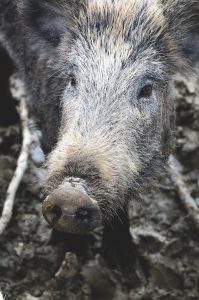 Italians treat game with reverence and it is eaten seasonally – even if it is farmed – and by way of a celebration. Wild boar, venison, hare and wild rabbit all work well in stews or cooked down to make a sauce for pasta. Duck and other game birds are great for roasting. Much depends on the cut of the meat.
Italians treat game with reverence and it is eaten seasonally – even if it is farmed – and by way of a celebration. Wild boar, venison, hare and wild rabbit all work well in stews or cooked down to make a sauce for pasta. Duck and other game birds are great for roasting. Much depends on the cut of the meat.
Italians tend to opt for slower methods of cooking when it comes to game. Wild boar meat, for example, is often marinated overnight. I use a combination of herbs and a robust red wine, but many of my neighbours marinate the meat in milk – it’s a question of taste. The marinade is then discarded and the meat is browned. It’s then left to simmer slowly in a mix of vegetables, garlic, herbs and more wine for anything up to three hours. It’s a laborious affair, but well worth the effort. When cooked properly, the meat is meltingly tender – it literally falls off the bone – and has absorbed all the flavours of the pot, making it the perfect accompaniment either for a plate of tagliatelle or a mound of polenta. I’ve never seen anyone who has eaten wild boar with polenta able to resist the urge to take a piece of bread and soak up the remaining juices.
Anyone who has hunted game for food will tell you that nothing is ever wasted – and so it shouldn’t be! One of my most memorable meals was in a ramshackle hunters shack. One of the hunters had shot a deer and for lunch we ate the heart and liver which, as any hunter will tell you, is always best at its freshest. It was simply pan-fried in oil with bay leaves, a splash of white wine added at the last minute. We ate it with crusty bread and it was everything the hunters promised it would be.
Of course, I wouldn’t recommend anyone go hunting unless they were accompanied by a seasoned hunter. But when it comes to cooking game, I’ve always stuck to one piece of advice given to me by a fellow hunter: keep it natural and keep it simple.
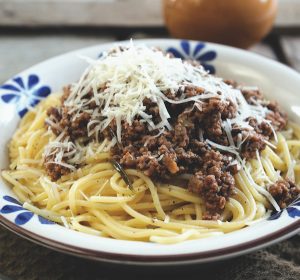 Wild boar (cinghiale)
Wild boar (cinghiale)
The wild boar hunting season in Italy begins in late September. The meat from these animals is highly prized and eating wild boar is always something of a festive occasion. As wild boar is now also reared (in semi-wild conditions) it has become much more accessible. However, even though it is available all year round, in Italy old habits die hard and it still tends to be eaten seasonally.
Wild boar salami (salami di cinghiale) has always been incredibly popular. It has a very distinctive flavour and is much darker in colour than normal salami. You can also find wild boar sausages in Italian speciality shops. The sausages are preserved in jars of oil and should be eaten as an antipasto with plenty of fresh, crusty bread. As for the meat, it can be stewed or roasted. In Italy it tends to be cooked very slowly over long periods of time to avoid the meat becoming tough. It is usually served as a ragù with pasta or as a stew with piles of warming polenta.
Try making spaghetti alla cacciatora (hunter’s spaghetti)
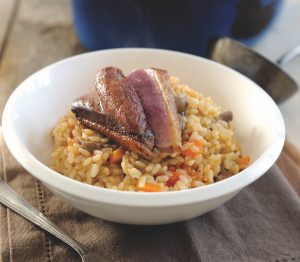 Wild duck (anatra selvatica)
Wild duck (anatra selvatica)
The mallard is the most common wild duck in Europe, as well as being the largest, and it is hunted throughout the autumn and winter. Duck is also widely farmed, a tradition that began with the Chinese thousands of years ago. But most breeds of domesticated duck are descended from mallards. Farmed duck is less gamey, but still tasty.
Duck meat should be cooked quickly. In the UK, duck breasts are often pan-fried until crisp on the outside and still pink on the inside, then served with a sharp sauce or fruit reduction. In provincial Italy, the most common method of cooking is to quickly roast the entire bird. The pieces of duck are then served with a few spoonfuls of sauce made from its own juices and a little white wine. The recipe below is a great way to make a couple of duck breasts stretch a long way.
Make Mario’s risotto con l’anatra (duck risotto)
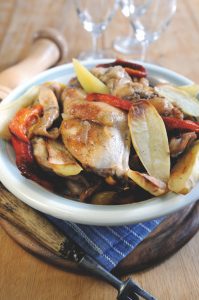 Wild rabbit (coniglio selvatico)
Wild rabbit (coniglio selvatico)
Wild and farm-reared rabbits have always been immensely popular in Italy. Indeed, many Italians prefer rabbit to pork and chicken. Rabbits were first introduced into Italian cuisine in Roman times. Today, wild rabbits are rare and hard to find, but fortunately the farmed variety is a reasonably good alternative.
Rabbit is a highly versatile meat that can be pan-fried, roasted or stewed. The general rule of thumb is that the older the animal, the longer you have to cook it. This applies particularly to the wild variety. Older rabbits in particular will taste better after being marinated overnight and cooked slowly.
Mario shows us how to make coniglio selvatico con peperoni dolci (wild rabbit with peppers)
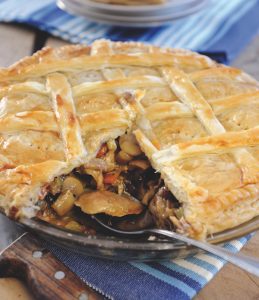 Hare (lepre)
Hare (lepre)
The hare hunting season lasts for a few months over autumn, after the animals have bred and brought up their young. The hare belongs to the same family as the rabbit but differs considerably both in appearance and taste: a hare is a much larger animal than a rabbit; hare meat is darker in colour and also tends to taste much more gamey than rabbit.
Recipes for cooking hare and rabbit are often similar, though the former requires much longer cooking times. It is also always preferable to marinade hare overnight before cooking – usually in a mix of wine, fresh herbs, vegetables and black pepper. As it requires slow cooking, it is perfect for making a rich pasta sauce or for slow cooked stews. The recipe below requires some effort, but you will be rewarded with a unique pie. Just remember to be patient and leave it to cool for a while after it comes out of the oven!
Try this recipe for torta di lepre e funghi (hare and mushroom pie)
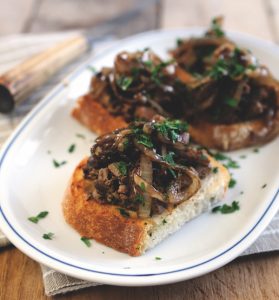 Roe deer (capriolo)
Roe deer (capriolo)
Venison, the meat of deer, is usually saved for special occasions in Italy. Of the various types of deer, roe deer – capriolo – is the most popular in Italy. (The red deer, which is highly popular in Britain, is virtually extinct here). With the advent of farmed deer, venison is now widely available. It’s also very low in fat and costs considerably less than the wild variety.
How you should cook your deer depends very much upon the cut. The haunch and the saddle are widely considered the prime cuts and are at their best when roasted. Other parts of the animal tend to benefit more from slow cooking, and can then be served either as a stew or as a ragù over fresh egg pasta. The recipe below is a variation on a dish that I ate in the hunters’ cabin. The key to the dish is finding the freshest liver possible, so make sure you go to a reputable butcher and order in advance.
Try Mario’s crostini con fegato di capriolo (roe deer liver crostini) recipe
Uncover more secrets of Italian food with Mario here.
